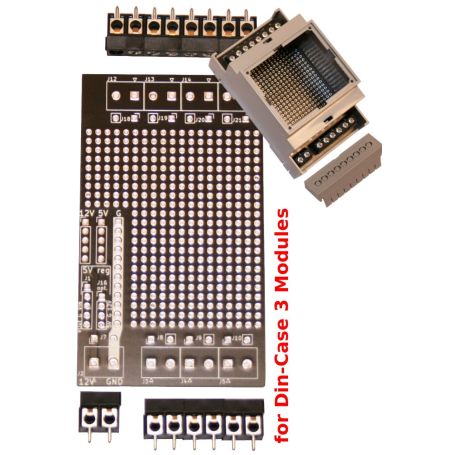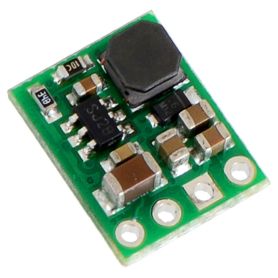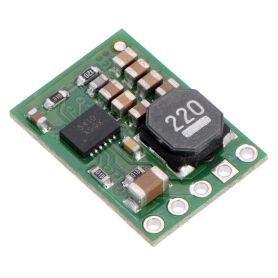Backplane DIN prototyping board for 3 modules Din Case
Backplane prototyping board
- DIN case: 3 modules
- Level: Backplane (bottom)
- Board type: prototyping
Payments are secured by LyraCollect, a French payment collection company.
It is possible to delivered to your home, to a pick-up point or picked up by appointment at MCHobby
We prepare, pack and ship your orders with great respect and care.
Prototyping board for 3 modules DIN Case
Our 3 modules DIN CASE are available on the shop since ages. Unfortunately they are missing of some DIN CASE addons to gives a perfect finish to a project. Thankfuly this is now fixed :-)
Here is the product that will bring the "perfect finish" touch to your project! It will bring screw terminal into a DIN case, a nice and handy way to connect sensor and actuator to your favorite electronic plateform.
This board is used at the bottom of a Din case (namely the BackPlane), it is a prototyping board for a 3 modules DIN case. See the picture to get helps about the board positionning in the the case.
This board could be used to place a microcontrolers like Feathers, ESP32, Arduino Mini, Arduino Nano, PyCom, Raspberry-Pi Pico (just in size), PYBStick, etc.
The prototyping board does feature the following behaviors:
- 1x power terminal: designed for 12V DC, you can use any voltage of your choice.
- 7x screw terminals: (2 position each) to create your own connections and wire sensors and actuator on the board. Connections points are breakout near of the prototyping area.
- 2x connectors for DC/DC regulator: allowing to wire a Pololu D24V10F5 regulator (5V 1A) or a Pololu D24V5F5 regulator (5V 600mA). Ann you need to power-up your project and the encolsed microcontroler.
- Power rails: a big GROUND rails (G) easily identified as well as 5 points 5V rails and 12V rails (the power in voltage)
- Prototyping Area: this board would be useless without a nice and large prototyping area.
Content
For each order, you will receive the prototyping board and the screw terminals (to be soldered on the board).
The DIN Case and other Items are not included but you can easily find them on the webshop.
Recommanded for low voltage usage
We do recommend to stay under a voltage of 24V DC for prototyping your project. Over that voltage you may get hurt and injuries in case of contact. If you do not have any experience in that area then stays under 12V DC.
Do not use this board to drive high voltage (eg: 220 V AC device) through relays. This board is not designed with the required security gap required for higher voltage/current devices as the prototyping area is filled with tons of conductive pads which is not suitable for high voltage application.
Tutorials
Using this board doesn't required tutorial. Just solder the screw terminal, the DC/DC regulator as required, and you are ready to go.












